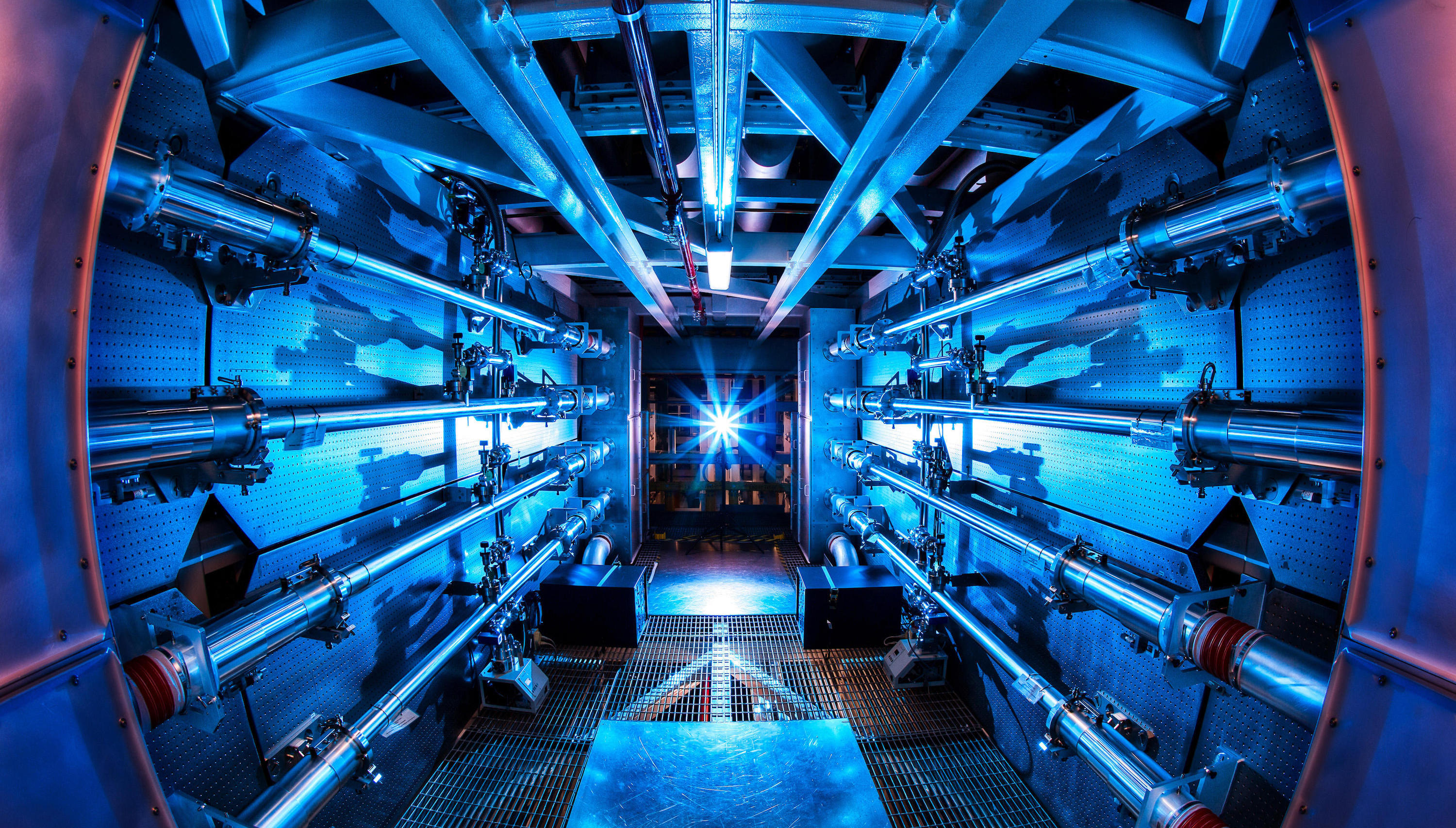Nuclear fusion reactor core produces more energy than it consumes in world-first demonstration
The breakthrough marks the first time that the core of a fusion reactor has given out more energy than it has taken in, but significant obstacles still need to be overcome.

Researchers at U.S. government lab say they have made a "major scientific breakthrough" in the fiery heart of a nuclear fusion reactor. For the first time ever, a reactor's core has been detected putting out more energy than was put into it — a small but consequential step in the race to unleash a near-limitless, zero-carbon alternate energy source to fossil fuels or conventional nuclear power plants.
By firing the world's most energetic laser beam to turn the hydrogen isotopes deuterium and tritium into a burning plasma, physicists at the U.S. government-funded National Ignition Facility (NIF) at Lawrence Livermore National Laboratory in California used the lasers' roughly 2 megajoules of energy to produce around 3 megajoules in the plasma, a 1.5-fold increase.
Scientists have been trying to build practical methods of harnessing nuclear fusion — the process that makes stars like our sun burn — ever since the 1940s. By fusing hydrogen atoms to make helium under extremely high pressures and temperatures, main-sequence stars convert matter into light and heat, generating enormous amounts of energy without producing greenhouse gases or long-lasting radioactive waste.
Related: Nuclear fusion reactor 'breakthrough' is significant, but light-years away from being useful
But replicating the conditions found inside the hearts of stars is no simple task. Besides recreating the hellish temperatures and pressures, vast quantities of energy are needed to transform fuel into a plasma, ignite it, and safely corral it with powerful magnetic fields or laser beams. It has taken decades and many billions of dollars to get here, but ignition has finally been achieved.
"During experiments 192 high-energy lasers converge on a target about the size of a peppercorn, heating the capsule of deuterium and tritium to over 3 million degrees Celsius [5.4 million degrees Fahrenheit] and, briefly simulating the conditions of a star." Jill Hruby, the undersecretary for Nuclear Security of the U.S. Department of Energy and administrator of the National Nuclear Security Administration (NNSA), said at a Dec 13. news conference. "We have taken the first tentative steps towards a clean energy source that could revolutionize the world."
The experiment, which took place in less than ten billionths of a second, streamed photons (light particles) into two ends of a cylinder inside the reactor's core to strike the inner walls of a capsule, producing X-rays which heated a pellet of fuel into a burning plasma. Once hot, the plasma burned for an infinitesimal instant, before winking out of existence.
Sign up for the Live Science daily newsletter now
Get the world’s most fascinating discoveries delivered straight to your inbox.
"This is a momentous result in this quest, arguably one of the most important steps forward ever taken. For the first time, we have evidence of a fusion reaction producing a sizable amount of excess energy," Gianluca Sarri, a physics professor at Queen's University Belfast who was not involved in the experiment, told Live Science. "So far, there were questions and doubts even on the feasibility of a proof-of-principle experiment of this kind. These have now been dissipated, injecting so much optimism and energy to push this forward and solve the technical issues still remaining."
The announcement, initially teased in a Financial Times article on Sunday (Dec. 11), generated a flurry of breathless news coverage excitedly heralding the dawn of unlimited, clean energy. Scientists have cautioned, however, that this is just the first small step to achieving fusion commercial power — while a net energy gain was observed between the lasers and the plasma at the reactor's heart, vastly more energy was expended than given out across the entire reactor, and fusion faces many challenges before it can scale up to power our homes.
"It is still not around the corner, unfortunately," Sarri said. "But this result will undoubtedly speed up developments, both from public institutions and private companies. Take it with a pinch of salt, but I would dare to say that we are now talking of a few decades at most before we have a working nuclear reactor based on fusion."

Ben Turner is a U.K. based staff writer at Live Science. He covers physics and astronomy, among other topics like tech and climate change. He graduated from University College London with a degree in particle physics before training as a journalist. When he's not writing, Ben enjoys reading literature, playing the guitar and embarrassing himself with chess.









